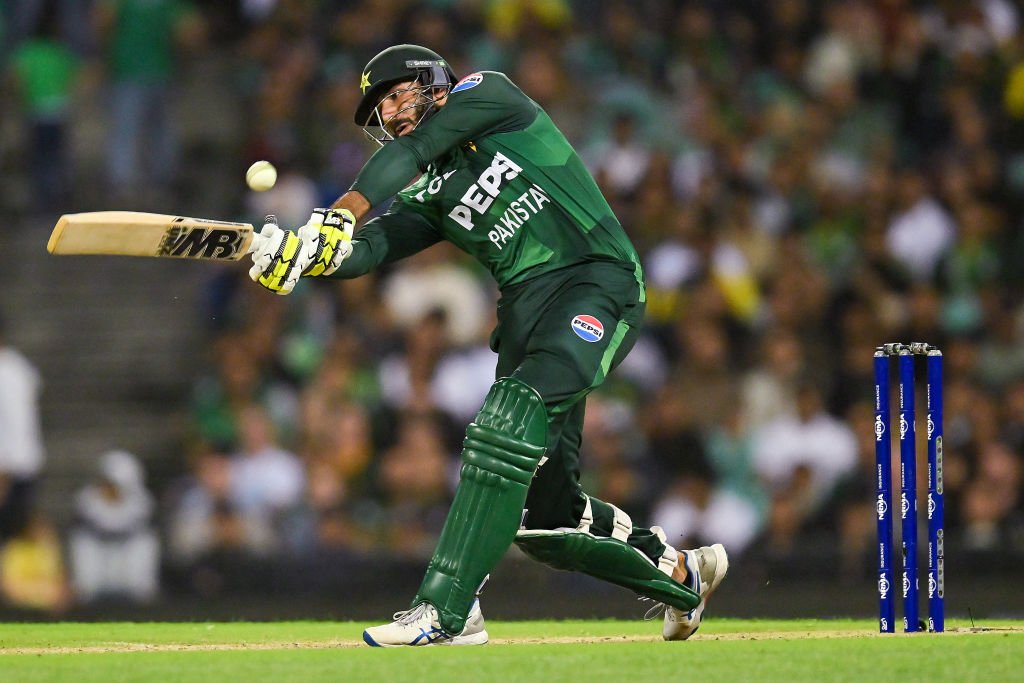
In an unexpected turn of events during the second T20I against Australia, Pakistan’s batters failed to hit a single boundary in the first nine overs of their innings. This rare feat highlighted the challenges Pakistan faced in the early stages of the game, especially under the intense pressure of playing against a formidable Australian side on their home turf.
The slow start was not just a product of Australia’s excellent bowling, but also of Pakistan’s inability to find gaps and capitalize on scoring opportunities early on. While Pakistan’s top-order struggled to get going, their inability to hit boundaries in the initial overs was a key statistic that caught the attention of cricket fans and analysts alike. This was a stark contrast to the aggressive batting style that the team is known for, particularly in shorter formats like T20Is, where boundaries often define the pace of the innings.
Australia, led by their experienced pace attack, applied pressure from the very start. The Australian bowlers, who were precise and aggressive, kept Pakistan’s top order under check, with Mitchell Starc and Josh Hazlewood creating constant threat. Pakistan’s openers, in particular, were unable to break free, which led to a growing sense of frustration among the batting side. The fact that no boundaries were struck in the first nine overs also reflected how well Australia had managed to maintain discipline in the field.
It was a challenging period for Pakistan, as they were not accustomed to such a slow start in T20I cricket. The team usually thrives on aggressive batting and quick runs, but this innings seemed to lack the usual firepower. The pressure to accelerate the run rate grew as the overs ticked by, and despite some recovery later in the innings, the damage had already been done.
The situation underscored a crucial lesson for Pakistan moving forward in the series: they need to address the issue of slow starts if they are to challenge Australia in the upcoming matches. While one bad start does not define a team, it is certainly an area of concern, particularly when facing a team as strong as Australia. Pakistan’s ability to regroup and find a way to generate momentum in the next few games will be key to their success.
Looking ahead, the team will likely focus on recalibrating their approach to the first few overs in order to better set the tone for the rest of the innings. The importance of attacking play in the powerplay cannot be overstated, and Pakistan will need to focus on maintaining a balance between aggressive batting and calculated risks. The T20I format, with its emphasis on power hitting, requires a strong start, and Pakistan’s inability to score boundaries early on in this match was a missed opportunity.
In the aftermath of the first nine overs, where Pakistan’s batters were unable to score any boundaries, the team’s strategy seemed to fall apart. Their inability to rotate the strike and find the boundary early on meant they were under constant pressure. This prolonged tension led to a slower run rate, and the lack of acceleration in the powerplay significantly hampered their chase. It wasn’t until later in the innings that Pakistan managed to find some rhythm, but by then, the momentum had firmly shifted in Australia’s favor.
Pakistan’s response to the slow start in future matches will be crucial. To compete effectively in this T20I series, Pakistan needs to revise their tactics for the early overs. The team’s aggressive batters, like Babar Azam and Mohammad Rizwan, must take the initiative in the powerplay, setting a platform for the middle order to capitalize. Moreover, fostering a sense of urgency without compromising shot selection could be key in reclaiming control in subsequent games.
As the series continues, the performance of Pakistan’s top-order will remain a key talking point. They have the talent to turn their fortunes around, but it will take a more confident and assertive approach in the opening overs to truly challenge Australia. With more focus and preparation, Pakistan can bounce back from this disappointing phase and look to level the series with better batting displays.

